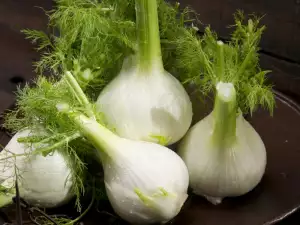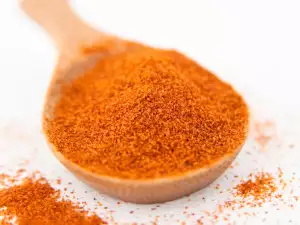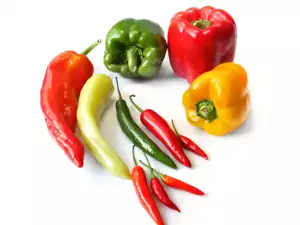Hot peppers are the fruit of tropical shrubs of the Capsicum genus. The plant has a height that reaches one meter, with a branching stem, white or gray colors are blue and purple spots. Some varieties are so spicy that just touching them causes skin irritation.
History of hot peppers
Hot peppers are unique for its taste and healing properties, like a true gift of nature. Known as chili peppers (Capsicum annuum), hot peppers are native to South America. There is evidence that people in Peru have known and used chilies since before 6000 BC After being transferred to Europe, the small "fire" peppers spread rapidly in India and Thailand and around the world.
An interesting fact is that in 1912 the American chemist Wilbur creates a rigid scale at which the coefficient of hotness in different varieties of peppers is measured to this day. According to the test, the most rigid in the world hot peppers are the Naga and Habanero varieties. Caps Naga Jolokia, or "ghost Caps" for example, contains between 85 000 and 75 000 million units. For comparison, pepperoncino contains only 100 to 500 units.

Initially, this scale was developed for medical purposes and examined the possibility that capsaicin is used as an analgesic, against arthritic pain, diabetic neuropathy, and headaches. They are linked for centuries as a food for longevity. The more capsaicin a variety of peppers contains, the more spicy and rich in antioxidants is. Experts say capsaicin is a weapon against the local animals and people.
When you eat hot peppers, the spicy flavor attacks the pain receptors of the tongue. They in turn send a message to the brain. Eating hot food regularly, makes cells become insensitive. At some point, you get used to the hotness and even take pleasure from it. Specialists in nutrition explain that this is due to endorphins, also called hormone of happiness, which hot peppers awaken. Therefore, snacking on hot peppers makes us happy.
Types of hot peppers
The five domesticated species of chili peppers are: Capsicum Annuum, Capsicum frutescens, Capsicum chinense, Capsicum pubescens and Capsicum baccatum. These are the most common types of chilies, but there are many different varieties.

Composition of hot peppers
Hot peppers are very useful because they contain lots of vitamins and minerals, proteins and sugars. 100 grams of chillies contain 0. g protein, 10 mg calcium, 13.2 mg magnesium, 24 mg phosphorus, 76 mg vitamin C, 115 mg vitamin A, vitamin E, B1, B2, B6, iron, potassium, niacin, tryptophan, etc. It has been shown that three peppers contain as much vitamin C as a kilogram of lemons. Capsaicin is the magician that gives chili peppers their unique properties. It helps burn calories faster and is one of the most powerful antioxidants.
Selection and storage of hot peppers
Buy hot peppers that are well shaped, glossy and firm, feeling heavy for their size. Avoid peppers that are soft and shriveled, have stains and cracks. Keep them in the refrigerator to maintain their freshness and wholesomeness longer. They are more durable than sweet peppers - lasting one week before they begin to change their taste. For this purpose, put unwashed peppers in paper bags or just wrap them in paper and store them in the vegetable compartment of the refrigerator. It is not recommended to put hot peppers in plastic bags, because they will get wet, which in turn helps in their rapid deterioration. After touching the peppers, wash your hands thoroughly, not to burn yourselves.

Hot peppers in cooking
Hot peppers are a typical vegetable that is present at almost every table. They can be eaten raw, or placed in different dishes. They are often used in dishes with meats, broths and vegetable dishes. From them cayenne red pepper is ground, which is a great alternative to fresh peppers. Traditionally, hot peppers are preserved alone or with other vegetables, thus available in the winter.
Benefits of hot peppers
That hot peppers are one of the most useful gifts of nature has been scientifically proven. The more capsaicin that is contained in a variety of peppers, the more spicy and rich in antioxidants it is. Capsaicin is a potent antioxidant with a wide range of benefits on human health. Two teaspoons of red chili peppers provide about 6% of the daily requirement of the body’ needs for vitamin C and more than 10 percent of vitamin A.
According to research, the natural compounds contained in red peppers that give them their taste, kill cancer cells protect the body against sinus infections. They are an anti - inflammatory component and care for soothing the stomach. With daily consumption, hot peppers relax breathing and pain, if any. It has also been shown that hot peppers reduce body fat and help lose weight.
Chili peppers have been effective against being overweight. It has been shown that eating a teaspoon of cayenne after every meal burns 15 calories. Weakening of their effect is due to the fact that they make us sweat, strengthen metabolism and melt fat. In practice, hotness "oxidizes" whole layers fat.

The capsaicin in hot peppers is a unique substance and has the ability to drive prostate cancer cells to kill themselves, prevent joint pain and decrease nerve fibers in brain tumor. The discovery of the positive effects of capsaicin could help find a cure for prostate cancer. Hot peppers and other spicy foods can have a positive effect on blood pressure. When eating a chili, our glands receive signals and begin to emit endorphins, known as hormones of happiness and pleasure.
Eating hot peppers helps to reduce the risk of hyperinsulimia (high levels of insulin in the blood) or problems associated with diabetes type 2. The capsaicin in hot peppers not only reduces pain, but its pungent taste simulates secretion that helps to cleanse blocked nose and lungs. It is an effective means of relieving osteoporosis pain, having a desensitizing effect on pain caused by diabetic neuropathy and psoriasis. Hot peppers have for centuries been considered a powerful aphrodisiac. Lycopene and capsaicin have anticancer and anti-aging agents.
Dangers of hot peppers
No matter how good hot peppers are, it is not advisable to overdo it with their consumption. Pungent tastes should be well dosed in our menu. Hot peppers are deprecated foods for people with impaired stomach functions, intestines, liver and kidneys, as well as people suffering from cardiovascular diseases. The burning taste of hot peppers can be a problem for those of us who have cholecystitis, gastritis, colitis, ulcers, problems with their pancreas. They may cause dysfunction of the stomach and intestines. As a result, it causes pain and sometimes even leads to bleeding.
Even specialists in gastroenterology can not agree on the good or bad are hot peppers. Although hotness irritates the stomach and is contraindicated in ulcers, there is evidence that due to hot peppers some people are cured of ulcer. This may be due to the stimulation of mucus secretion in the stomach, which creates a protective layer on the stomach lining.



















Comments